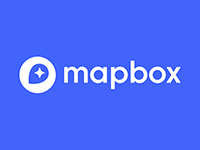 The key to rendering MapBox markers in your React Native application is implementing the MapboxGL.PointAnnotation component.
The key to rendering MapBox markers in your React Native application is implementing the MapboxGL.PointAnnotation component.
In the article: “Getting Started with the Mapbox Maps SDK for React Native,” I covered the absolute basics needed to get a MapBox map to render in your React Native application. The level of effort was low, and the scope of the article was minimal, but that was the whole idea. We wanted to stick to the basics and we did, by rendering a map and setting the center coordinates to Columbus Circle in New York City. In this article, however, our goal is to set a number of markers on a map.
So, markers, what are they? Well, they’re the common features of map applications that allow us to provide a visual cue that refers to a location on earth. And depending on your business requirement, your markers can often extend the richness of your application. For example, you can attach click or press event handlers and provide geo-specific information to the user. Or, you could customize the image that is used for the marker to further enhance the user experience. Now the key to rendering markers with MapBox is implementing the MapboxGL.PointAnnotation. According to the mapbox GitHub page, this component represents “…a one-dimensional shape located at a single geographical coordinate.” While that definition may be a bit dry, it just means that it is the component that will become the marker on your map.
package.json
Above we have the contents of package.json. We have dependencies on react, react-native and @mapbox/react-native-mapbox-gl. Let’s take a look at an example:
Example # 1
Now there is a lot going on in Example # 1, but let’s break it down. As I mentioned in the previous article, we need to use the MapboxGL.setAccessToken method to let MapBox know what our access token is. So, just skip down to line # 64: the render() method. Here, we render the MapBox map via the MapboxGL.MapView component, which takes care of all the heavy lifting when it comes to rendering the map. The sole child element of MapboxGL.MapView is the return value of our renderAnnotations() method. So let’s go ahead and take a look at that method.
Look at the renderAnnotations method on line # 54. Here, we create a for-loop, which iterates over the state.coordinates array. And for each iteration, we call the renderAnnotation() method, passing the value of the “i” variable, which is just a counter. In this method, we are simply pushing elements into the items array, which is a private variable, and we return that array. So, now, back at line #74, it is this array of MapboxGL.PointAnnotation components. Let’s just go ahead and take a look at the renderAnnotation() method.
Take a close look at the renderAnnotation() method on line # 30. You’ll see that it takes counter as an argument, which we’ll need in order to understand the coordinates of the marker we create. This method returns a MapboxGL.PointAnnotation, which is constructed in this method. The constants id, coordinate and title are used to help make this MapboxGL.PointAnnotation unique. The sole child element is a react-native Image component instance. This image you use is arbitrary, so go ahead and use any image you want. We make reference to “../common/images/marker.png”, which is a relative path in our application. The most important part of this method is the coordinate constant. We use the counter variable to get a reference to one of the state.coordinates array elements, and it’s here that we are able to give this MapboxGL.PointAnnotation component a geographic presence on our map. Nice.
Summary
Overall, in this example we did three things. First, we rendered a MapboxGL.MapView. Second, we executed a method whose return value became the sole child element of the MapboxGL.MapView component. That method looped through all of the coordinates that we stored in state.coordinates. And third, we used a for-loop to iterate the state.coordinates array and render a MapboxGL.PointAnnotation for each coordinate in that array. So, on the whole, this approach requires relatively little code. If you’re new to React Native, however, it might take a little getting used to. But I think that you’ll find that outside of the React Native learning curve, rendering markers on the map is fairly simple, and once you do master it, you’ll find it to be a great addition to your tool belt.

Beyond installing react-native and mapbox SDK, are there anything i need to do specifically on the native devices??
I’m getting all kinds of “undefined is not an object (evaluating MapBoxGL.UserTrackingMode)”..
i thought its as simple as install the mapbox SDK via NPM and off you go?? but seems there are native device stuff im misssing? and need Android Studio and XCode etc. ??
any advice would be greatly appreciated..
Hello. Done as code above. Don`t see the markers. each Item of array it is: